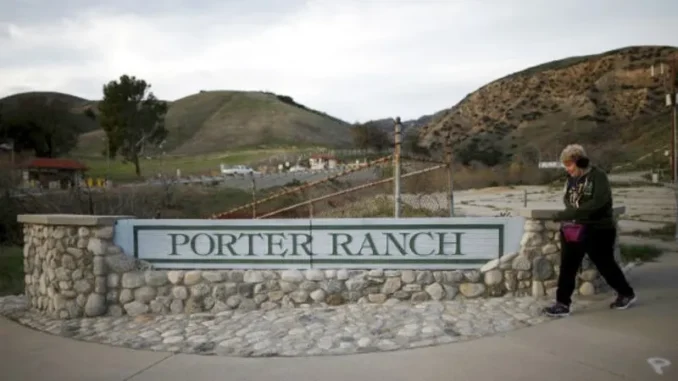
Gas prices have spiked in San Diego and across California.
That may sound like old news after months of high prices at the pump, but this time another kind of gas is running up the tab: natural gas, which fuels stoves and heats water and homes.
Average bills for PG&E residential customers in Northern California shot up to an estimated $195 in January, compared to $151 the year before; SoCalGas customers got hit with $300 on average, compared to $123 last year, according to data shared by Jean Spencer, supervisor of the energy division of California’s public utility commission, at a recent hearing. Customers in San Diego faced a similar spike.
Meanwhile, across the country, wholesale natural gas prices have fallen an average of 50% since October, according to reporting in Bloomberg.
What gives? California’s Public Utilities Commission held a hearing this week attended by different state energy agencies and industry representatives to look into the question and discussed strategies to mitigate high prices. While the commission can’t directly set prices, attendees raised different long-term options that might keep the cost of gas down for consumers.
The meeting followed a decision by the commission last week to speed up a climate credit for consumers that should reduce gas bills. That move will translate to roughly $50 off customers’ bills — but, said commission president Alice Busching Reynolds, it “was a short-term Band-Aid and this is a longer-term problem.”
At least one California gas company expects bills to go down in February.
Why Are Prices So High?
California pipes in 90% of the natural gas it uses from elsewhere, making the state vulnerable to issues outside its borders.
Several factors conspired to send natural gas prices soaring in the West, according to the U.S. Energy Information Agency: below-normal temperatures; high gas use; lower imports of natural gas from Canada; gas pipeline constraints, including maintenance issues in West Texas; and lower gas storage levels in the Pacific region.
On Monday, Gov. Gavin Newsom made clear he isn’t satisfied we have the whole story, writing in a letter to federal regulators that “those known factors cannot explain the extent and longevity of the price spike.” He asked federal energy regulators to investigate “whether market manipulation, anticompetitive behavior, or other anomalous activities are driving these ongoing elevated prices in the western gas markets.”
What, If Anything, Can Be Done?
The price of natural gas is set by regional and national markets. But the utilities commission and industry representatives raised short- and longer-term changes that could insulate California customers from wildly fluctuating bills.
In addition to accelerating the climate credit, the Public Advocate’s Office at the utilities commission has proposed spreading the increased cost over three to six months, to make each individual bill more affordable and mitigate the risk of disconnections.
Industry representatives raised gas storage capacity and regulations as topics the commission should consider.
Storing gas can help protect California customers from shocking bills because, if a utility has ample gas in storage when prices are spiking, “you can run down your (current supply) for a while and not have to buy quite so much at the super expensive time,” said Severin Borenstein, an energy economist at UC Berkeley, in an interview.
Roger Schwecke, senior vice president at Southern California Gas, suggested reevaluating how much gas is stored at Aliso Canyon, the largest natural gas storage facility in the state. A major leak occurred at Aliso Canyon in 2015, causing Southern California Gas to temporarily relocate thousands of households. In the aftermath, the utilities commission capped how much gas could be stored at the facility.
Mark Potca, a program manager at the utilities commission’s Public Advocates Office, also emphasized the importance of storage capacity at Aliso Canyon, mentioning a proposal to increase the cap, which would provide more storage capacity. How Aliso Canyon gets used is something “that the commission will need to consider closely moving forward,” Potca said.
Lucy Redmond, director of gas reservoir engineering and facilities at PG&E, raised the impact of regulations from California Geologic Energy Management Division, which went into effect in 2018. She said the regulations have caused, on average, a 40% decline in the utility’s well capacity.
Those rules, which were much stricter than previous gas storage standards, were enacted after the Aliso Canyon leak, said Mike Florio, a senior fellow at Gridworks and a former utilities commissioner, in an interview with CalMatters. “A lot of people think it’s really excessive, that they kind of went from not paying any attention at all to being really too strict in these regulations,” Florio said. The rules require testing of gas facilities, and some of the tests can take a well out of service for as long as a year, he said.
“They’ve created a price problem,” he said.
But the utilities commission couldn’t revise the rules even if it wanted to, since a different entity, the Geologic Energy Management Division of the Department of Conservation, wrote them, Florio said. “The only way this gets resolved is if it goes up their respective chains of command, maybe even as far as the governor’s office, to say, ‘Hey, let’s get these agencies on the same page.”



